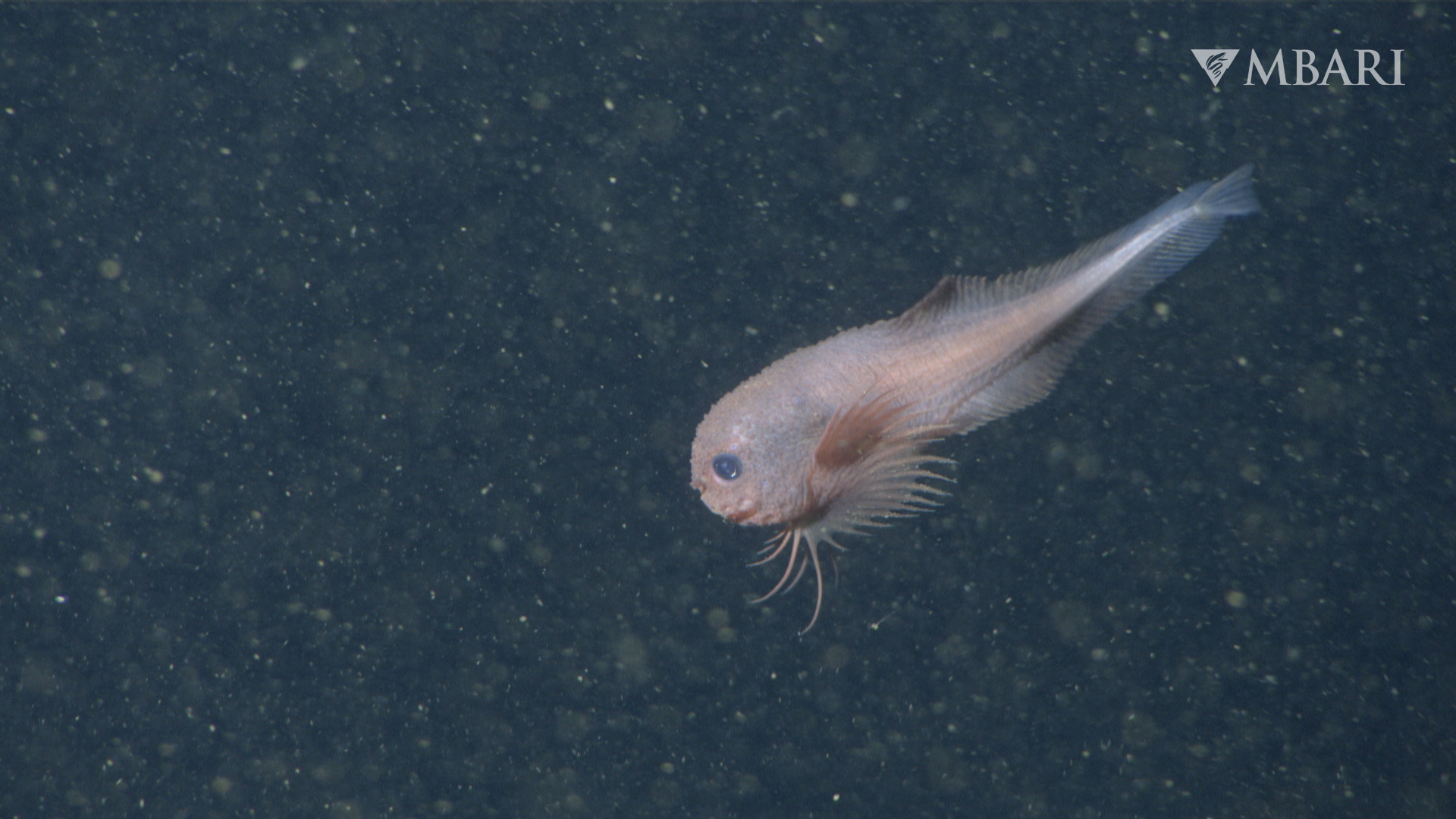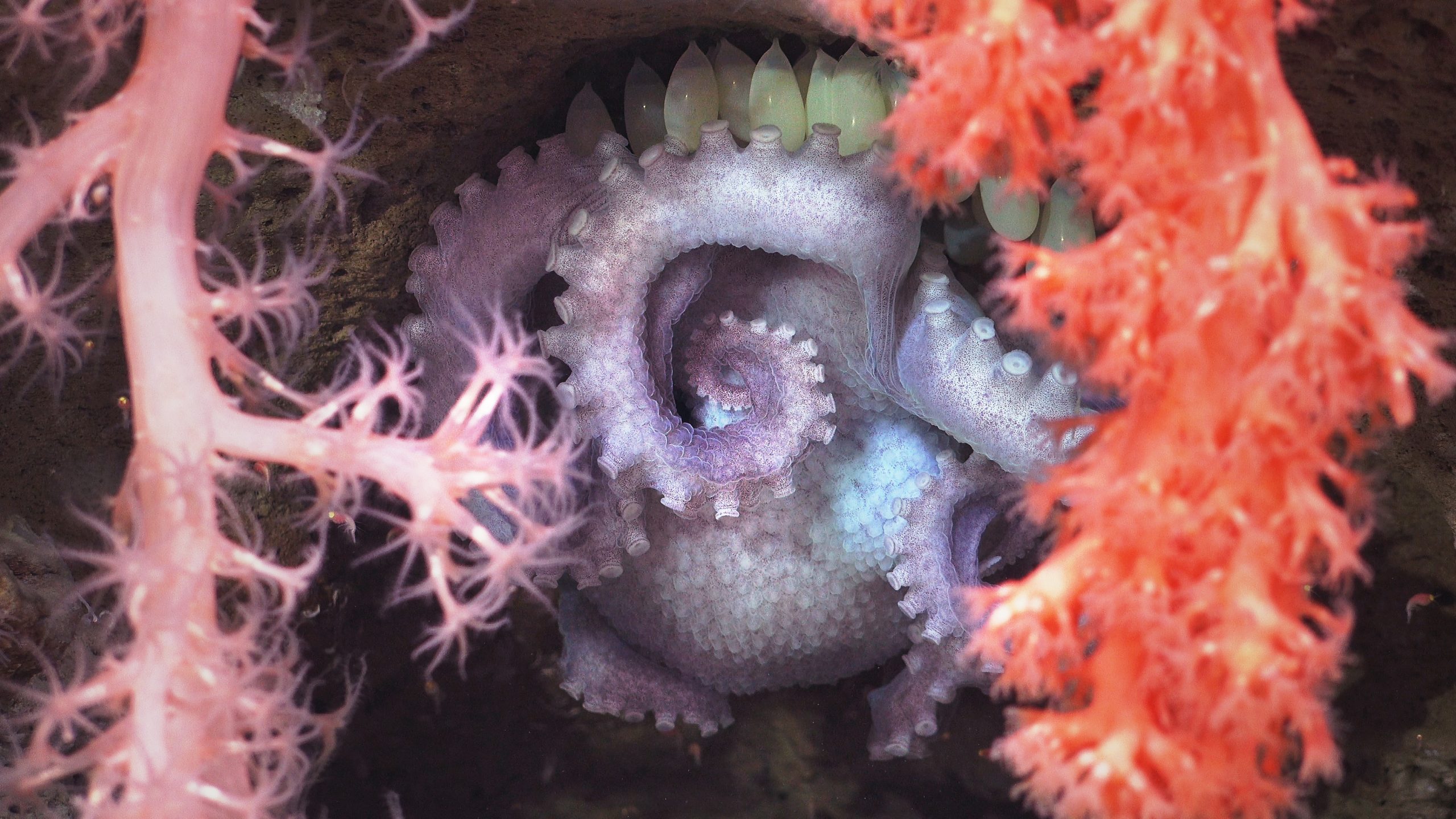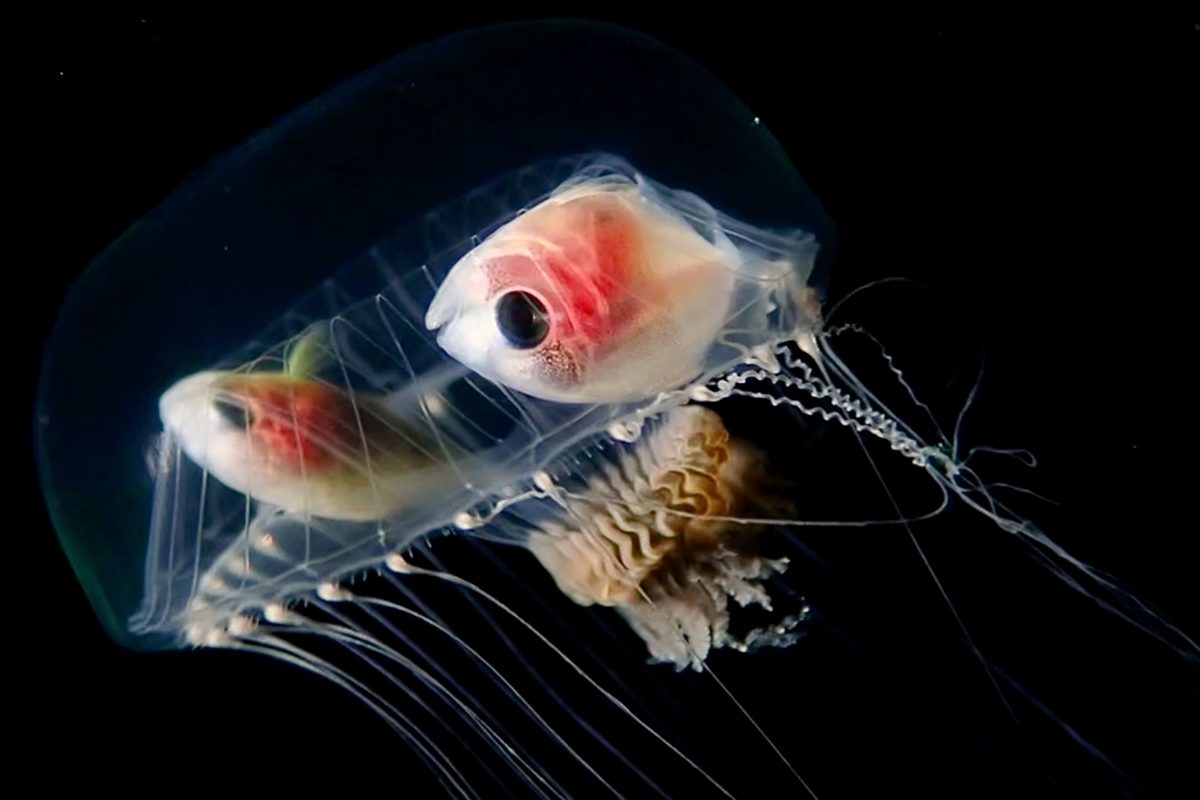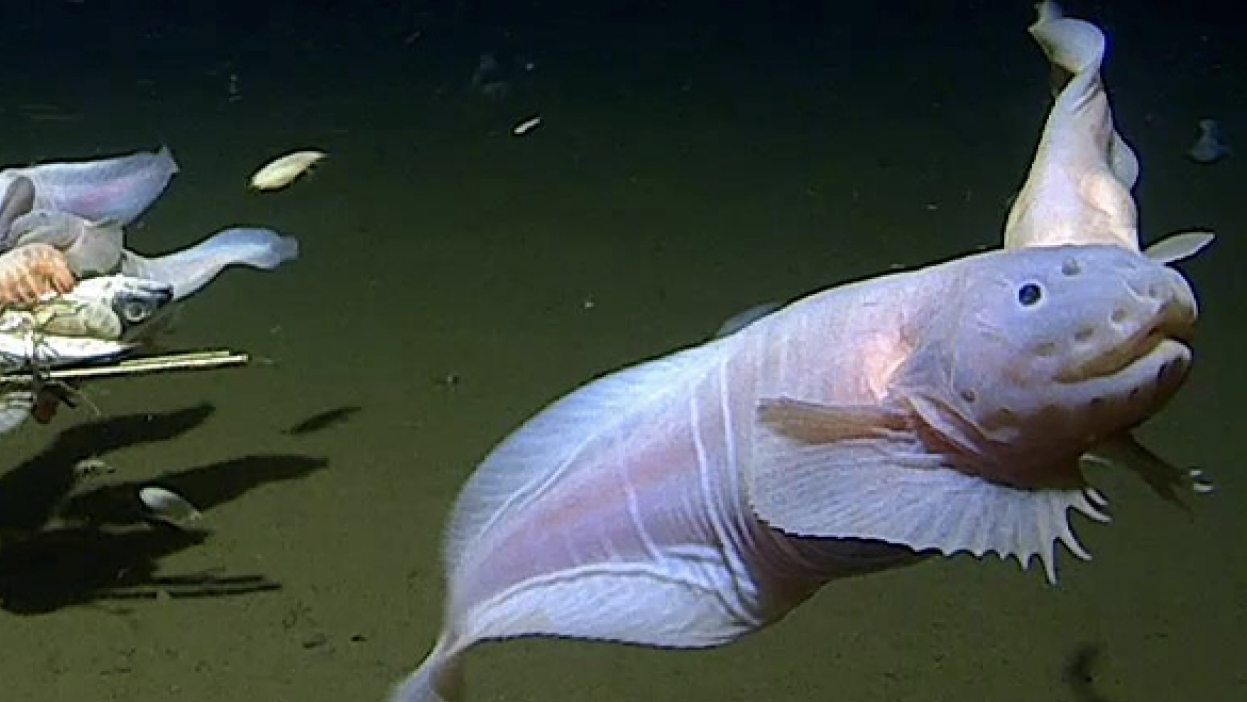Around the World in 80 Casts: Global Aquatic Wildlife Discoveries
October 28, 2025
Introduction
Welcome back to another edition of "Around the World in 80 Casts," your weekly dive into the most astonishing and bizarre aquatic wildlife discoveries from across the globe. This week, we journey from the crushing pressures of the deepest oceanic trenches to the vibrant waters of the Caribbean, uncovering creatures that defy imagination. The past seven days have been extraordinary for marine biology, with scientists revealing new species, documenting incredible behaviors, and pushing the boundaries of deep-sea exploration. Prepare to be amazed as we unveil a pink, bumpy snailfish with an endearing face, a massive deep-sea expedition off the coast of Argentina that uncovered a treasure trove of new life, a surreal encounter with fish taking refuge inside a jellyfish, and a groundbreaking study on the survival strategies of creatures in the Pacific's enigmatic "Ring of Fire." So, grab your gear and let's cast off into the unknown, where the mysteries of the deep await.

The Adorable Bumpy Snailfish of Monterey Canyon
In the inky blackness of the Monterey Canyon, nearly 3,300 meters (10,800 feet) beneath the surface of the Pacific Ocean, a team of researchers from the Monterey Bay Aquarium Research Institute (MBARI) and SUNY Geneseo has officially introduced the world to a creature that can only be described as endearingly strange: the bumpy snailfish, *Careproctus colliculi*. This newly described species, with its distinctive pink hue, bumpy skin, and almost cartoonishly cute face, has quickly captured the hearts of scientists and the public alike. The discovery, part of a larger study that identified three new species of abyssal snailfishes, highlights the incredible biodiversity lurking in the largely unexplored deep sea.
The bumpy snailfish was first observed using MBARI's remotely operated vehicle (ROV) *Doc Ricketts*, a state-of-the-art submersible capable of withstanding the immense pressure of the deep ocean. The research, co-authored by six biology majors from SUNY Geneseo, underscores the vital role of collaborative science and advanced technology in modern exploration. The findings were published in the journal *Ichthyology and Herpetology*, detailing the unique characteristics of these newly found snailfishes. The bumpy snailfish's unusual appearance is not just a curiosity; it's a testament to the extreme adaptations required to survive in such a harsh environment. The deep sea is a world of crushing pressure, freezing temperatures, and a complete absence of sunlight, yet life finds a way to thrive in the most remarkable forms.
The discovery of *Careproctus colliculi* and its relatives is more than just an addition to the ever-growing catalog of marine life. It serves as a crucial reminder of how much we still have to learn about our own planet. Each new species discovered in the deep sea provides valuable insights into the complex web of life that exists far beyond our reach. These findings are essential for conservation efforts, helping resource managers and policymakers make informed decisions to protect these fragile ecosystems from threats like climate change and deep-sea mining. The bumpy snailfish, with its charmingly odd appearance, has become an ambassador for the deep sea, reminding us of the hidden wonders that lie beneath the waves and the importance of preserving them for future generations.

Argentina's Deep-Sea Treasure Trove: The "Barbie-Pink" Lobster and More
A groundbreaking expedition into the deep waters off the coast of Argentina has yielded an astonishing discovery of over 40 new species, including a crustacean that has been affectionately nicknamed the "Barbie-pink" lobster. This remarkable find was the result of a collaborative effort between Argentine scientists from the National Council for Scientific and Technical Research (CONICET) and the Schmidt Ocean Institute, who explored the Mar del Plata Canyon, one of the deepest submarine canyons in the South Atlantic. Using a remotely operated vehicle (ROV), the team was able to capture high-quality images and collect samples from depths of over 3,500 meters, revealing a vibrant and previously unknown ecosystem.
The expedition's live-streamed dives captivated a global audience, with viewership numbers shattering previous records for the Schmidt Ocean Institute. The public was treated to a firsthand look at a world teeming with life, from the now-famous pink lobsters to a bizarre assortment of anemones, sea cucumbers, sea urchins, snails, and corals. Among the discoveries were ten new species of bamboo corals, four octocorals, a new brittle star, and eleven new sponges. The sheer diversity of life found in this relatively small area of the ocean floor highlights the vastness of our planet's unexplored biodiversity.
The discovery of these new species is a significant scientific achievement. It provides a wealth of new information for researchers studying the evolution and adaptation of life in extreme environments. The Barbie-pink lobster, with its vibrant coloration, is a particularly intriguing find. In the deep sea, where sunlight is non-existent, coloration often serves different purposes than it does in shallower waters, such as communication, camouflage, or species recognition. Further study of these new creatures will undoubtedly reveal even more secrets about their unique biology and their role in the deep-sea ecosystem. This expedition serves as a powerful reminder that the age of discovery is far from over and that the deep ocean remains one of the last great frontiers of exploration on Earth.

A Jellyfish Hotel: A Surprising Symbiosis in the Caribbean
In the warm, clear waters of the Caribbean Sea off the coast of Cozumel, Mexico, underwater photographer Pedro Valencia has captured a truly remarkable and rarely seen behavior: two fish taking shelter inside the bell of a jellyfish. The footage, captured during a blackwater dive, shows the two small fish swimming calmly within the pulsating bell of the jellyfish, seemingly unfazed by the venomous tentacles that trail behind. This incredible sight offers a glimpse into the complex and often surprising relationships that exist between marine creatures.
Blackwater diving, which involves exploring the open ocean at night, is known for revealing the strange and wonderful creatures that migrate from the depths to the surface to feed. Valencia's encounter with the jellyfish and its fishy companions is a perfect example of the unique discoveries that can be made during these nocturnal explorations. Jellyfish scientist Scott Morrissey, who shared the video on social media, explained that this unusual arrangement is a form of symbiosis. The fish gain protection from predators by hiding within the jellyfish's bell, and they may also have access to a ready supply of food. In return, the fish may act as bait, luring in prey for the jellyfish.
This fascinating interaction is a beautiful illustration of the intricate and often delicate balance of life in the ocean. It is a reminder that even the most seemingly simple creatures can have complex relationships with one another. The footage captured by Pedro Valencia provides a rare and valuable opportunity to observe this behavior in its natural setting. As we continue to explore the world's oceans, we are sure to uncover many more examples of these surprising and wonderful symbiotic relationships, each one adding another piece to the puzzle of life in the sea.

Survivors of the Abyss: Life in the Pacific's Ring of Fire
The Pacific Ring of Fire, a region known for its intense volcanic and seismic activity, is also home to some of the deepest trenches on Earth. In these extreme environments, where pressure can be over 1,000 times that at the surface, a team of scientists from the University of Western Australia (UWA) and Tokyo University of Marine Science and Technology has discovered that life is not just surviving, but thriving. Their research, published in the *Journal of Biogeography*, reveals a remarkable array of adaptations that allow creatures to flourish in these hadal zones, more than 6,000 meters below the surface.
The team conducted a series of crewed submersible dives into the Japan, Ryukyu, and Izu-Ogasawara trenches, reaching depths of up to 9,775 meters (32,000 feet). What they found was a surprisingly diverse and abundant ecosystem. In the nutrient-rich Japan Trench, they observed a plethora of deposit-feeding sea cucumbers, mysid shrimp, and tube anemones. In contrast, the food-limited Ryukyu Trench was dominated by brittle stars, while sea cucumbers were almost entirely absent. These findings demonstrate how different communities of animals have adapted to the specific conditions of their environment.
Perhaps the most exciting discovery of the expedition was the documentation of the world's deepest fish, a snailfish of the genus *Pseudoliparis*, filmed at a staggering depth of 8,336 meters in the Izu-Ogasawara Trench. This incredible observation, made in 2023, pushes the known limits of vertebrate life on our planet. The researchers documented nearly 30,000 individual organisms from 70 different morphological groups, providing an unprecedented look into the biodiversity of the hadal zone. This groundbreaking research not only expands our understanding of the limits of life on Earth but also provides a crucial baseline for monitoring the health of these unique and fragile ecosystems in the face of a changing climate.
Conclusion
This week's journey into the world of aquatic wildlife has been nothing short of extraordinary. From the charmingly bizarre bumpy snailfish to the resilient inhabitants of the Pacific's deepest trenches, we have been reminded once again of the boundless wonders that lie hidden beneath the surface of our oceans, lakes, and rivers. The discoveries of the past seven days have not only expanded our knowledge of the natural world but have also highlighted the urgent need for continued exploration and conservation. As we continue to push the boundaries of science and technology, we can only imagine what other incredible creatures and fascinating behaviors await us in the unexplored depths. Join us next week for another installment of "Around the World in 80 Casts," as we continue our quest to uncover the most amazing aquatic wildlife discoveries from across the globe.
